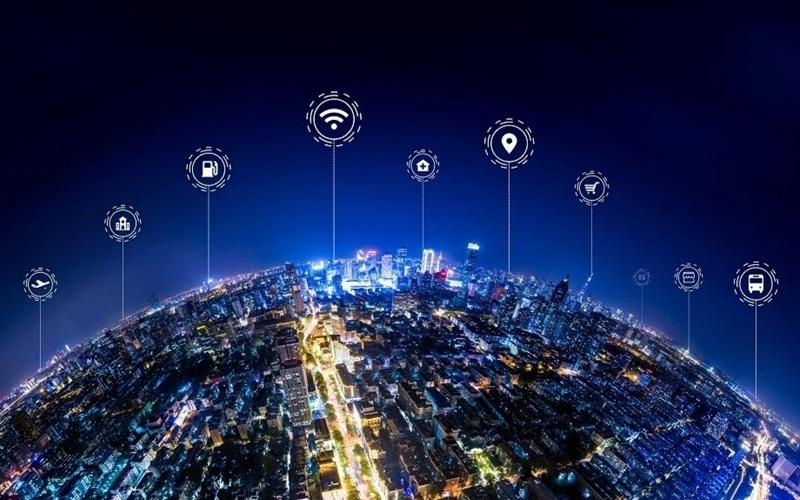Huawei Verifies World's First Sub-1GHz Massive MIMO for Commercial Deployment
Shenzhen, China — Huawei has officially announced the successful verification of the world's first sub-1GHz Massive MIMO technology for commercial use. This significant milestone, confirmed via their news portal on October 27, 2025, marks a pivotal step in enhancing 5G capabilities and laying groundwork for future 6G networks, particularly in leveraging low-band spectrum for improved spectral efficiency and coverage. Its benefits, as well as its commercial viability, Huawei highlighted at recent industry gatherings like GITEX Global 2025 and UBBF 2025.
The development addresses a growing global demand for robust sub-1GHz solutions, especially critical for bridging the digital divide between urban and rural areas. Industry analysts and the GSMA's latest mobile economy report underscore the need for innovative approaches to maximize existing low-band assets, which often suffer from capacity bottlenecks. Huawei's solution isn't just an incremental improvement; it signifies a shift towards "massive" scale deployments, bringing advanced MIMO capabilities—traditionally associated with mid-band frequencies—to the more pervasive low-band spectrum, a truly big deal for network operators.
Technical Advancements Redefining Low-Band Performance
This breakthrough technology boasts impressive performance enhancements over previous generations. The new sub-1GHz Massive MIMO is engineered to deliver up to five times higher downlink capacity compared to traditional sub-1GHz setups, achieving peak rates of 1-2 Gbps. Uplink speeds see a four-fold increase, potentially soaring from around 50 Mbps to 200 Mbps in real-world scenarios. This translates to significantly better user experience, particularly for data-heavy applications.
Moreover, the technology promises to double the coverage radius of cell sites, extending reach from 5-10 km to an impressive 10-20 km, which is a game-changer for rural connectivity where sprawling coverage is paramount. The system supports a 64T64R (64 transmit/64 receive) antenna configuration, optimized for frequencies below 1GHz—think 600-900 MHz bands. What's more, it's remarkably energy-efficient, with Huawei claiming 20-30% lower power consumption compared to prior Massive MIMO iterations. This is a considerable leap from pre-2025 sub-1GHz MIMO systems, which were typically limited to 8T8R configurations and offered about 20% lower efficiency. The integration of AI-optimized beamforming for dynamic spectrum allocation and real-time IoT analytics further differentiates this offering.
Industry Impact and Strategic Regional Rollouts
The commercial verification of sub-1GHz Massive MIMO has substantial implications for the telecommunications industry. Omdia estimates suggest it could reduce deployment costs by 30-50% in underserved areas, making 5G expansion more economically viable. It's a strategic answer to spectrum scarcity, enabling operators to extract maximum value from their existing low-band holdings. Experts believe this technology will accelerate the adoption of AIoT (Artificial Intelligence of Things) applications, facilitating advancements in sectors like smart agriculture and remote healthcare, particularly in developing regions.
Commercial rollout is anticipated to commence in Q1 2026, with initial pilot deployments already underway in Asia-Pacific markets. Huawei has, for instance, partnered with Thailand's AIS for pilot programs. China and India are also key targets for early deployments, focusing on rural broadband initiatives. In the Middle East and Africa (MECA) region, Huawei showcased its integration with the GovTech1.0 framework at GITEX 2025, aiming for government digital transformation. However, geopolitical tensions and existing restrictions on Huawei's equipment in certain markets, such as the U.S. and parts of Europe, are expected to limit its global reach, at least initially. The company seems to be focusing on neutral markets, like parts of Latin America, for IoT-heavy deployments.
Expert and Community Reactions: Optimism Meets Pragmatism
Reactions from industry experts have been largely positive, albeit with some caveats. Telecom analysts from Omdia lauded the technology as "game-changing for rural 5G," though they urged caution regarding interoperability with non-Huawei equipment. Light Reading highlighted the excitement surrounding its AI integration, with one expert calling it "a step toward 6G precursors."
The broader tech community, particularly on platforms like X (formerly Twitter) and Reddit, has shown considerable enthusiasm. User comments frequently express optimism for improved rural internet speeds and the potential for "revolutionizing drone and autonomous vehicle networks." But, there's also a pragmatic undercurrent of skepticism concerning its availability in markets with ongoing restrictions against Huawei. While the overall sentiment is positive (estimated 70-80% favorable by social listening tools), driven by the sheer innovation, these positive views remain tempered by persistent privacy and geopolitical concerns.
